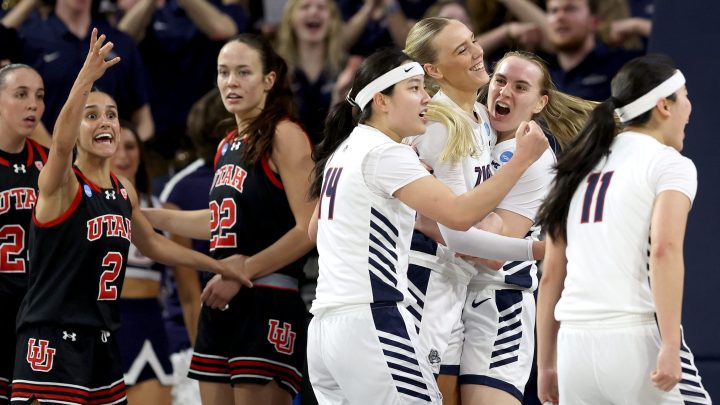
If college athletes get paid, who gets how much?

College athletes could be getting a pay day. A few years back, the NCAA allowed student athletes to accept endorsement deals, and now the organization and the nation’s five biggest conferences have agreed to a major settlement of three class-action antitrust lawsuits. That could mean some current and former college athletes could get nearly $2.8 billion in back pay. And going forward, some Division 1 athletes could start getting paid more like professional athletes.
There are still a lot of big “ifs” here. The settlement still has to be approved by a judge, and plaintiffs, for one. If it moves forward, conferences would be allowed to share revenue with athletes for the first time. But how that might work, raises a whole lot of questions.
If this settlement stands, and athletes can soon get a share of the revenue they help generate for their colleges, there are going to be a lot of decisions to make.
Kenneth Shropshire at the Wharton School of the University of Pennsylvania says the most difficult one “is how to make the distributions. And it is a head-exploding exercise to think about how you do it.”
There are just so many different ways to go.
“Do you strike some deal as a player comes in? Do you pay based on the level of performance? Football brings in all the money, so should lacrosse get some number that’s equal, or how do you do it?,” said Shropshire.
There’s also the question of how much of the revenue athletes should get. This settlement says about 22%. But Ellen Staurowsky at Ithaca College says she thinks that should be an open question, too.
“All of these things are being discussed in the absence of collective bargaining,” Staurowsky said. “And this is problematic, because it raises questions around well, how do you get to 20% rather than 50%?”
She says the athletes should get to weigh in. There’s also the issue of gender equity.
“Title Nine requires equal treatment of men and women,” said Andrew Zimbalist at Smith College. He says that raises the question of whether the law would require equal pay for male and female college athletes.
“If athletes get some or all of their remuneration based upon their market value, that threatens to violate the basic principle of Title Nine,” he said.
Because, historically, men’s sports have brought in more money than women’s. Zimbalist says paying athletes through revenue sharing would be a massive overhaul of the whole college sports system.
“And so there’s just so many economic and political and legal questions that we don’t know the answers to,” he said.
And likely won’t for a while.
There’s a lot happening in the world. Through it all, Marketplace is here for you.
You rely on Marketplace to break down the world’s events and tell you how it affects you in a fact-based, approachable way. We rely on your financial support to keep making that possible.
Your donation today powers the independent journalism that you rely on. For just $5/month, you can help sustain Marketplace so we can keep reporting on the things that matter to you.











